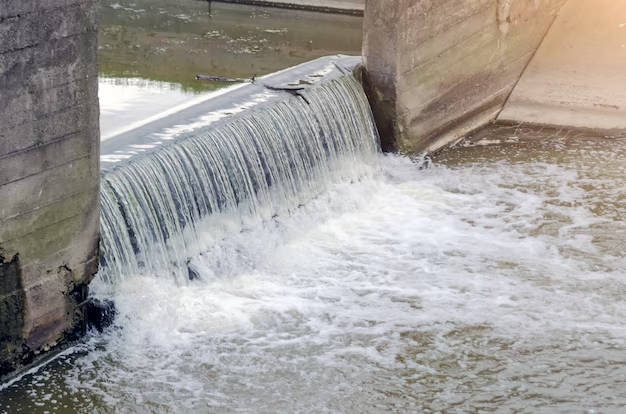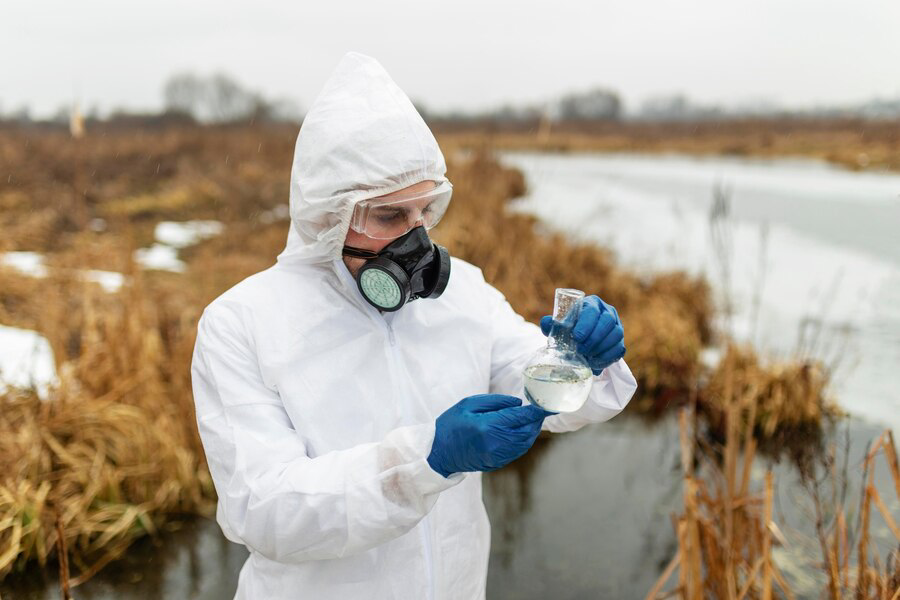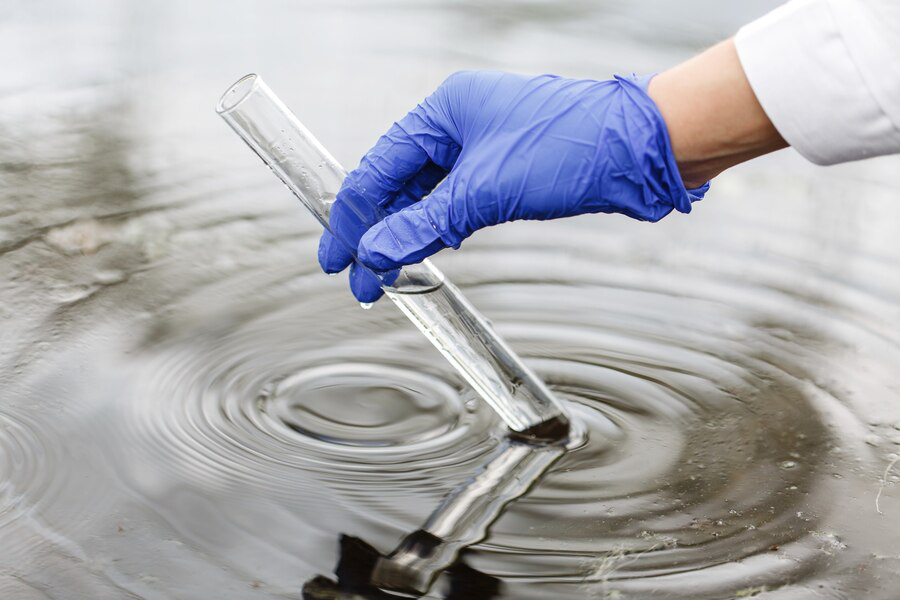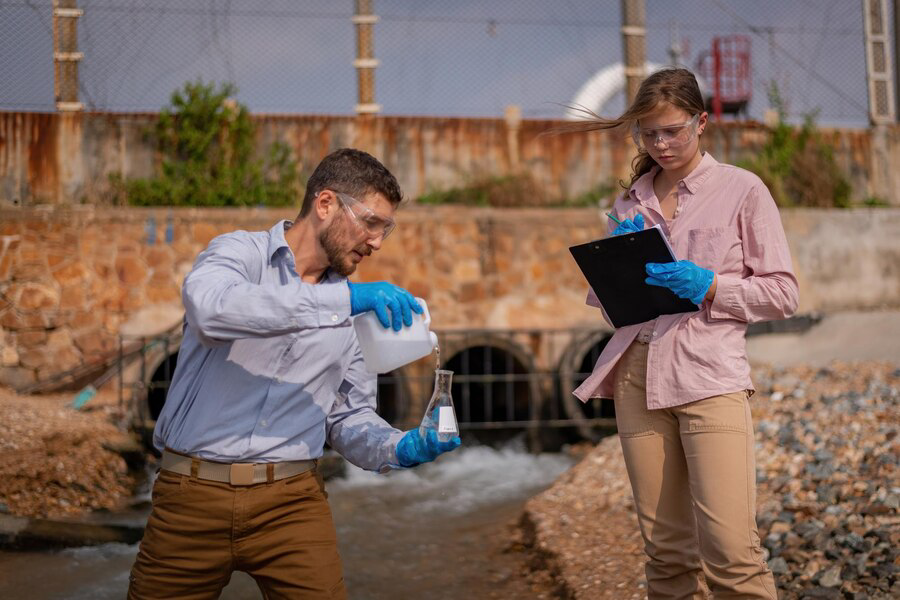Navigating the aftermath of a flood requires more than resilience; it demands a strategic approach to water damage restoration. “Rising from the Flood: The Essential Steps in Water Damage Restoration” delves into the intricacies of rebuilding after nature’s deluge. This guide unveils the crucial steps, beyond the surface-level cleanup, necessary to restore a space to its pre-flood glory. From assessing structural integrity to mitigating mold proliferation, each page offers insights into the meticulous process of reclaiming spaces submerged by water. As we explore the transformative journey from inundation to rejuvenation, discover the indispensable measures that go beyond conventional restoration, ensuring a comprehensive revival that not only counters the flood’s immediate impact but fortifies against future challenges.
Assessment of Damage

Embarking on the water damage restoration journey begins with a meticulous examination of the aftermath. A comprehensive evaluation involves identifying affected areas, scrutinizing the structural integrity, and categorizing damage severity. This detailed assessment becomes the cornerstone for a well-crafted restoration plan,
guiding subsequent actions. By understanding the extent of the water damage, restoration professionals can prioritize tasks, allocate resources efficiently, and ensure a targeted and effective recovery process.
Immediate Water Extraction
In the aftermath of a flood, time becomes a critical factor in mitigating further damage. Swift and decisive action is imperative. Utilizing specialized equipment such as pumps and wet vacuums, professionals swiftly remove standing water from affected spaces. This rapid extraction not only prevents escalating damage but also acts as a deterrent against the onset of mold and mildew. Immediate water removal lays the groundwork for a more seamless and successful restoration process, minimizing long-term consequences.
Drying and Dehumidification
Once standing water is extracted, the battle against moisture continues through the implementation of industrial-grade drying equipment and dehumidifiers. These tools work in tandem to eliminate residual moisture from structures and materials. Proper drying is paramount as it not only inhibits the growth of mold and mildew but also safeguards against potential structural issues over time. The meticulous use of these drying technologies ensures a thorough and effective drying process, setting the stage for the subsequent stages of restoration.
Sanitization and Disinfection: A Shield Against Post-Flood Contamination
In the aftermath of a flood, safeguarding the occupants’ health is paramount. Sanitization and disinfection emerge as crucial steps, eliminating contaminants introduced by floodwaters and creating a safe, healthy environment. This proactive measure protects against potential health hazards.
Process
Employing professional-grade disinfectants, every affected surface undergoes a thorough cleansing. From walls to flooring, meticulous attention ensures the removal of harmful pathogens. This rigorous process not only restores cleanliness but also provides peace of mind for occupants.
Special Considerations
Focus on high-touch surfaces and areas prone to bacterial growth. Implementing advanced disinfection techniques ensures a comprehensive approach, leaving no room for potential threats. This step significantly contributes to the overall restoration of the space.

As the sanitization process unfolds, a renewed sense of safety permeates the once-affected space. This critical step sets the stage for subsequent restoration efforts, emphasizing the importance of prioritizing health in the wake of a flood.
Content Cleaning: Salvaging Memories Amidst the Flood's Aftermath
When floodwaters recede, personal belongings often bear the brunt of the damage. Content cleaning becomes a poignant task, evaluating and salvaging damaged items. This step not only mitigates financial losses but also preserves cherished possessions.
Assessment and Sorting
Begin by categorizing items based on damage severity. Prioritize salvageable belongings and employ specialized techniques for each material. Delicate handling ensures the preservation of sentimental and valuable items.
Utilizing Specialized Techniques
From textiles to electronics, employ industry-specific cleaning methods. Collaboration with restoration experts proficient in content cleaning techniques ensures a delicate balance between restoration and preservation. This meticulous approach minimizes losses for homeowners.
Content cleaning transcends material restoration; it becomes a restoration of memories. By salvaging personal belongings, homeowners embark on a journey of recovery that extends beyond the physical realm.
Structural Repairs: Fortifying Foundations for a ResilientTomorrow
Amidst the chaos of a flood, structural damage poses a significant threat to a building’s integrity. Swift action in structural repairs becomes paramount, reinforcing weakened foundations, repairing walls, and replacing damaged materials.
Foundation Reinforcement
Commence with a detailed assessment of the foundation’s stability. Utilize advanced engineering techniques to reinforce weakened areas, ensuring a resilient base for future challenges. This proactive step safeguards against long-term structural issues.
Wall Repairs and Material Replacement
Address compromised walls promptly. Utilize durable, water-resistant materials in the restoration process. Timely replacement of damaged materials prevents further deterioration and contributes to the overall stability of the structure.
As structural repairs unfold, a resilient foundation emerges, symbolizing the strength to withstand adversity. This restoration not only safeguards the building but also fortifies it for a more resilient tomorrow.
Mold Remediation: Unveiling the Silent Threat and Eradicating It
In the aftermath of a flood, mold can silently thrive in damp environments, posing health risks and compromising the structure. Mold remediation is a vital step, requiring a thorough inspection and the implementation of effective strategies.
Thorough Inspection
Conduct a meticulous examination of the entire space, focusing on areas prone to mold growth. Identify hidden pockets of moisture and potential breeding grounds. This comprehensive inspection forms the basis for targeted remediation.
Implementation of Remediation Strategies
Utilize industry-approved techniques to eradicate mold colonies. From effective cleaning agents to advanced ventilation systems, each strategy aims to eliminate mold at its source. This proactive approach prevents recurring issues.
Mold remediation is not just about eliminating visible signs; it’s about ensuring a mold-free, healthy environment. As the restoration process unfolds, the eradication of this silent threat contributes to a renewed and safer space.
HVAC System Inspection
After a flood, scrutinizing the HVAC system is crucial for maintaining indoor air quality. An exhaustive examination is essential to identify and address water damage. Thoroughly clean and sanitize ducts and components to prevent the circulation of contaminated air within the restored space. This proactive approach not only restores HVAC functionality but ensures occupants breathe air free from post-flood pollutants, contributing to a healthier indoor environment. By utilizing specialized cleaning agents, the cleaning process eliminates any residual mold, bacteria, or allergens, guaranteeing optimal air quality and creating a post-flood environment where occupants can breathe easily.
Monitoring and Documentation
In the dynamic process of restoration, constant monitoring and documentation are vital. Regularly track each restoration step and maintain a detailed record for insurance claims and future flood preparedness. A real-time monitoring system ensures prompt adjustments to unexpected challenges, allowing a flexible approach. Comprehensive documentation, from initial assessment to final touches, serves as a knowledge base for future preparedness, offering insights into effective strategies. This combination of vigilant monitoring and detailed documentation transforms challenges into opportunities for refinement, creating a roadmap for future restoration processes.
Preventive Measures and Future Planning
Post-flood resilience involves implementing preventive measures and creating a comprehensive plan. Robust waterproofing fortifies structures against water ingress, minimizing the risk of extensive damage. Enhanced drainage systems efficiently channel water away, reducing the likelihood of flooding. Elevating electrical components mitigates damage risks, safeguarding against extensive repairs. Develop a detailed flood preparedness plan, including emergency procedures and resource allocations, ensuring a swift and coordinated response. These proactive measures and future planning not only minimize damage but also build a resilient foundation for a secure and adaptive future in the face of potential flooding challenges.
In the unwavering journey of “Rising from the Flood: The Essential Steps in Water Damage Restoration,” the intricacies of water damage recovery unfold as a transformative process. From the meticulous assessment of damage and immediate water extraction to preventive measures and future planning, each step contributes to not only restoring spaces but also fortifying against future challenges. For a comprehensive restoration experience, trust Precision Restoration, Inc. Our commitment to precision and excellence sets us apart in Edmond, Oklahoma, and beyond. If you seek expert guidance or require immediate assistance, contact us at 844-245-7979. Let Precision Restoration be your partner in reclaiming spaces and building resilience after the flood.



